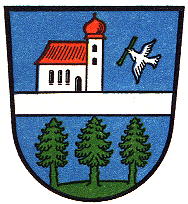Wegscheid (Bayern): Difference between revisions
Knorrepoes (talk | contribs) m (Text replacement - "[[Category:German Municipalities" to "50 px|link=Germany[[Category:German Municipalities") |
Knorrepoes (talk | contribs) m (Text replacement - "50 px|link=Germany" to "") |
||
| Line 22: | Line 22: | ||
[[Civic Heraldry Literature - Germany|Literature]] : Stadler, 1964-1971, 8 volumes; Hupp, O: [[Kaffee Hag albums]], 1920s | [[Civic Heraldry Literature - Germany|Literature]] : Stadler, 1964-1971, 8 volumes; Hupp, O: [[Kaffee Hag albums]], 1920s | ||
[[Category:German Municipalities W]] | |||
[[File:bayern.jpg|50 px]][[Category:Bayern]] | [[File:bayern.jpg|50 px]][[Category:Bayern]] | ||
[[Category:Passau]] | [[Category:Passau]] | ||
[[Category:Wegscheid]] | [[Category:Wegscheid]] | ||
Revision as of 07:02, 20 September 2018
This page is part of the German heraldry portal Deutsche Wappensammlung |
Heraldry of the World |
|
German heraldry:
|
Selected collector's items from Germany:
|
WEGSCHEID
State : Bayern
District (Kreis) : Passau, (until 1973 Wegscheid)
Additions : 1972 Eidenberg, Kasberg, Meßnerschlag, Möslberg, Thalberg, Thurnreuth; 1978 Wildenranna
Official blazon
In Blau ein silberner Balken, darauf stehend eine eintürmige silberne Kirche mit roten Dächern, auf die von links eine silberne Taube mit einem goldenen Scheit im Schnabel zufliegt; unten auf grünem Boden drei grüne Nadelbäume.
Origin/meaning
The arms were devised between 1800 and 1811. Before 1800 the town used on seals only the wolf of Passau, as the town was a possession of the high-monastery of Passau. The upper part of the arms show a local history. When the local church was built it was seen that a white pigeon carried the wood for the church. The local count immediately decided to built the church where the pigeon dropped the wood. Around this church the town developed.
| The arms by Hupp in the Kaffee Hag albums +/- 1925 |
Contact and Support
Partners:
Your logo here ?
Contact us
© since 1995, Heraldry of the World, Ralf Hartemink 
Index of the site
Literature : Stadler, 1964-1971, 8 volumes; Hupp, O: Kaffee Hag albums, 1920s
![]()













